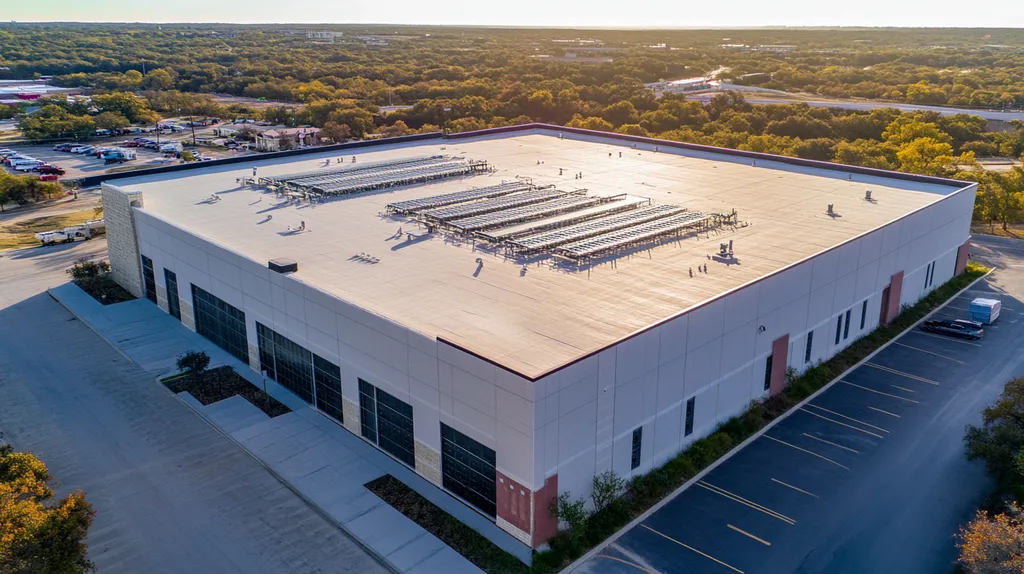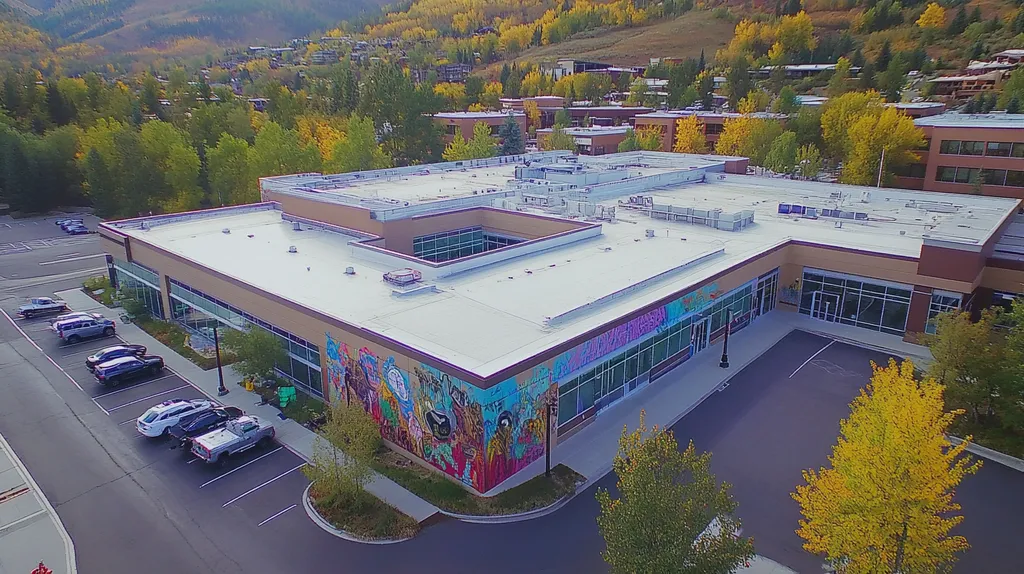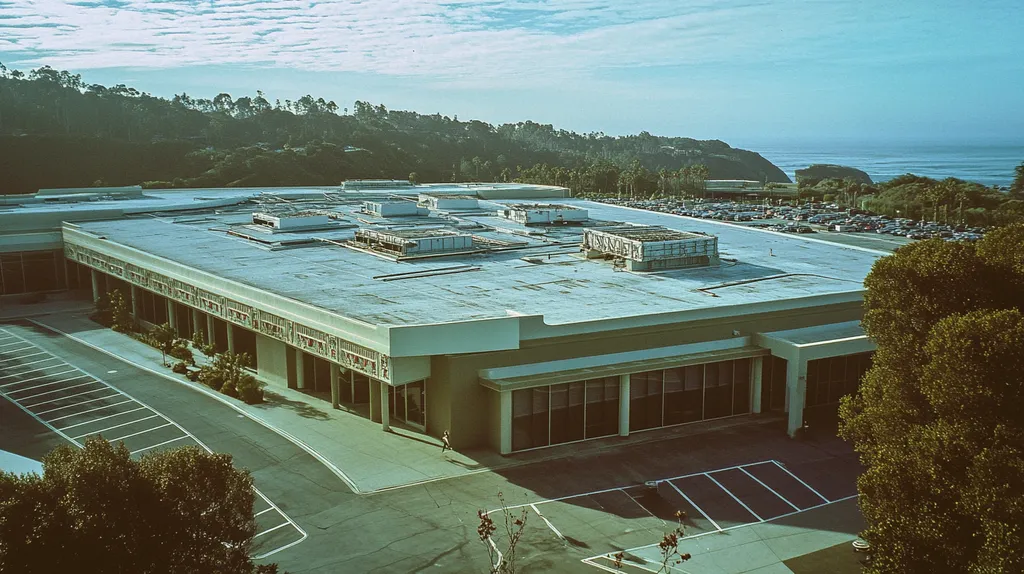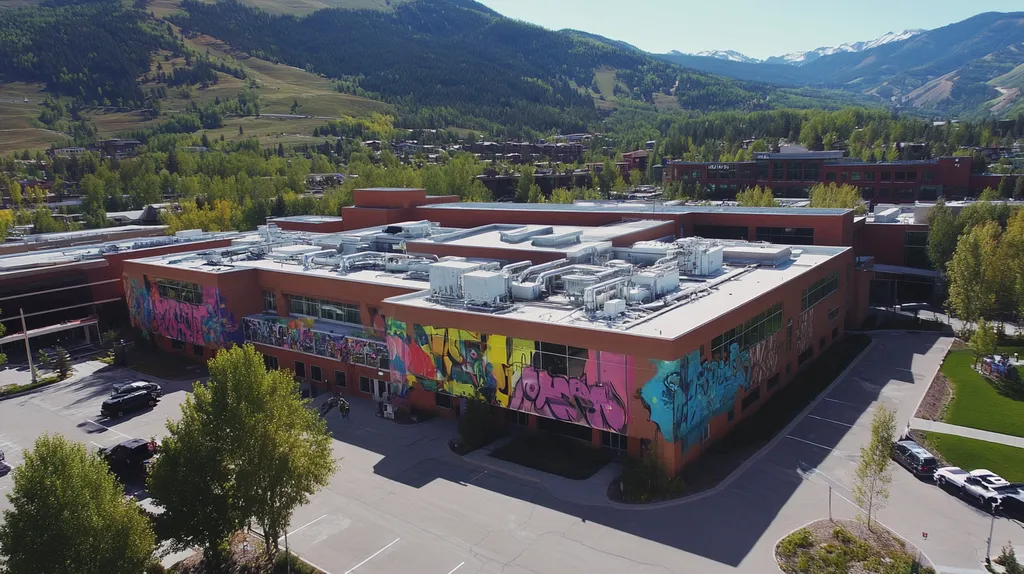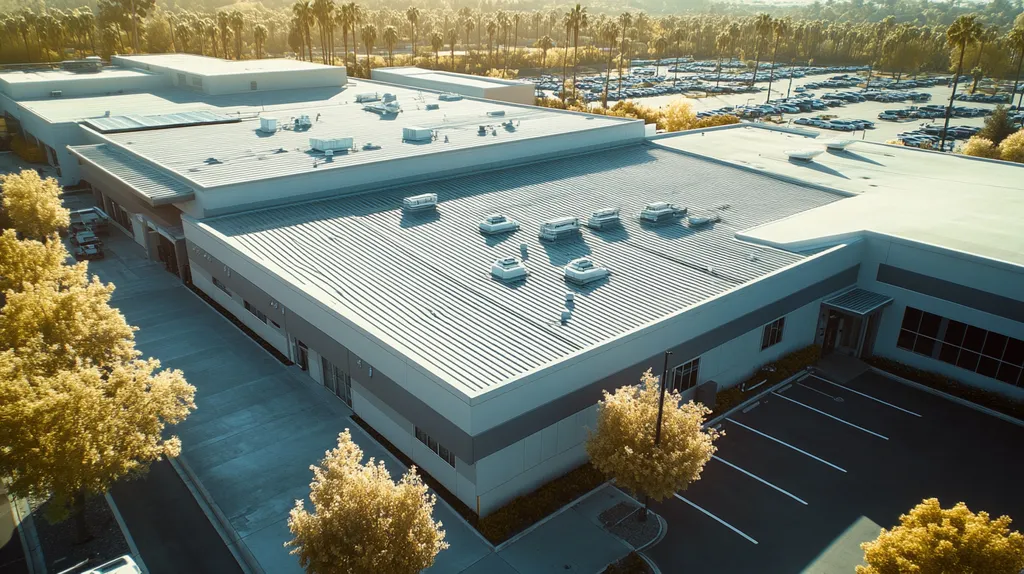In today’s volatile economy, commercial property owners are leaving millions in potential savings unrealized through inadequate analysis of roof coating investments. Industry data shows that properly specified coating systems can reduce energy costs by up to 30% while extending roof life by 10-20 years.
Yet without rigorous ROI calculation methods, facility managers often make coating decisions based on incomplete data or misleading industry generalizations. This comprehensive guide provides a data-driven framework for evaluating coating investments, optimizing performance metrics, and maximizing long-term returns.
From fundamental financial concepts to advanced optimization strategies, this handbook delivers actionable insights for transforming roof coatings from simple protective barriers into powerful drivers of building performance and profitability.
SECTION 1: FUNDAMENTAL CONCEPTS
Every day, commercial property owners leave thousands of dollars in potential savings on the table by delaying or dismissing roof coating decisions. While the upfront investment may seem substantial, modern coating technologies offer unprecedented opportunities for return on investment (ROI). With energy costs continuing to rise and sustainability becoming a business imperative, understanding the financial implications of roof coatings has never been more critical.
Defining ROI in Commercial Roof Coatings
ROI is a performance metric that evaluates the profitability of an investment by comparing its gains against its costs, expressed as a percentage. For roof coatings, this calculation helps determine whether the investment will generate sufficient returns to justify the initial expenditure. (source: Sunbase Data)
The core components of roof coating ROI include direct cost savings from reduced energy consumption, decreased maintenance requirements, and extended roof life. These benefits compound over time, making the timing of installation crucial to maximizing returns.
Successful ROI analysis must also account for regional factors such as climate conditions, local energy costs, and available incentives. These variables significantly impact the potential returns and help determine optimal coating specifications.
Understanding these fundamentals enables property owners to make data-driven decisions about coating investments rather than relying on gut feelings or industry generalizations.
Key Financial Metrics and Calculation Methods
The foundation of ROI analysis starts with accurate baseline measurements of current roofing costs, including energy consumption, maintenance expenses, and projected replacement timing. These figures establish the comparative basis for evaluating coating performance.
Critical metrics include annual energy savings, maintenance cost reductions, and extended service life value. When combined, these factors reveal the true financial impact of a coating system beyond simple payback calculations.
Property owners must also consider the time value of money, incorporating factors like inflation and opportunity costs. This comprehensive approach provides a more accurate picture of long-term financial benefits.
Advanced ROI calculations should include both direct and indirect benefits, such as improved tenant comfort, enhanced property value, and potential tax advantages.
Impact of Energy Efficiency on ROI
Energy efficiency represents the single largest contributor to roof coating ROI in most commercial applications. Modern reflective coatings can reduce roof surface temperatures by up to 80°F, dramatically decreasing cooling loads and associated costs.
The energy savings potential varies based on building type, location, and existing insulation levels. Single-story structures with large roof areas typically see the most substantial benefits due to their high roof-to-wall ratios.
Peak demand reduction offers another significant source of savings, as many utilities charge premium rates during high-usage periods. Reflective coatings help minimize these costly demand spikes.
Environmental benefits also contribute to ROI through reduced carbon emissions, potential carbon credits, and improved corporate sustainability metrics. These factors increasingly influence property valuation and tenant attraction.
SECTION 2: SYSTEM COMPONENTS
With today’s commercial roofs facing unprecedented environmental challenges and rising energy costs, selecting the right coating system has become a critical business decision. Industry data shows that improper coating choices can reduce potential energy savings by up to 50% and significantly shorten roof lifespans. Understanding the core components of roof coating systems – from material selection to substrate preparation – directly impacts both immediate performance and long-term return on investment.
Types of Commercial Roof Coatings and Materials
Modern coating technologies offer distinct performance characteristics that must align with specific building requirements. Acrylic coatings provide excellent UV protection and cost-effectiveness, making them ideal for warm, sunny climates with minimal ponding water.
Silicone coatings deliver superior waterproofing and weather resistance, excelling in regions with heavy rainfall or frequent temperature fluctuations. Their moisture-curing properties ensure reliable performance even in challenging conditions.
Polyurethane coatings stand out for their exceptional durability and resistance to mechanical damage. These coatings prove particularly valuable on roofs with regular maintenance traffic or equipment servicing needs.
Cool roof coatings can reduce energy consumption by reflecting solar heat, while extending roof life through decreased thermal stress. These systems typically deliver the highest ROI in hot climates with high cooling demands. (source: SmartSeal)
Role of Substrate and Existing Roof Condition
The substrate’s condition fundamentally determines coating system success. Even minor surface contamination can compromise adhesion, while underlying moisture can cause premature coating failure.
Professional inspection must evaluate substrate integrity, moisture content, and surface profile. These factors directly influence coating selection and necessary preparation steps.
Proper surface preparation often requires cleaning, repairs, and primer application. Skipping these critical steps to reduce initial costs typically results in premature failure and negative ROI.
Existing penetrations, flashings, and drainage systems require particular attention during assessment and preparation. These areas often determine overall system performance and longevity.
Thermal and Reflective Properties of Coatings
Advanced coating formulations can reduce roof surface temperatures by up to 80°F during peak summer conditions. This dramatic temperature reduction directly translates to lower cooling costs and extended roof life.
Solar reflectance index (SRI) ratings provide standardized performance metrics for comparing coating options. Higher SRI values indicate better heat reflection and improved energy efficiency potential.
Thermal emittance capabilities work alongside reflectivity to optimize coating performance. The combination of these properties determines actual temperature control effectiveness.
Regional climate conditions significantly impact the value of thermal and reflective properties. Hot, sunny regions typically see faster ROI from high-performance reflective coatings compared to cooler climates.
SECTION 3: IMPLEMENTATION METHODS
The difference between a roof coating that delivers outstanding ROI and one that fails prematurely often comes down to implementation. Industry data reveals that improper installation causes 80% of premature coating failures, resulting in millions in wasted investment annually. While modern coating technologies offer impressive potential returns, even the highest-quality materials will underperform without meticulous attention to preparation, timing, and quality control.
Surface Preparation and Application Techniques
Surface preparation stands as the cornerstone of coating success, with cleanliness and substrate integrity directly impacting adhesion. Thorough cleaning removes contaminants that can create weak points in the coating system, leading to premature failure.
Professional contractors must employ appropriate cleaning methods based on substrate type and contamination level. High-pressure washing, aggressive scrubbing, or specialized cleaning agents may be necessary to achieve proper adhesion conditions.
Application techniques vary by coating type and environmental conditions. Spray application offers superior coverage for large areas, while roll-on methods provide better control around penetrations and flashings.
Thickness monitoring during application ensures proper material coverage. Even minor variations in coating thickness can dramatically impact performance and longevity.
Optimal Timing for Roof Coating Installation
Life cycle cost analysis reveals that installation timing significantly impacts long-term performance and ROI. Temperature, humidity, and substrate moisture content all play crucial roles in coating adhesion and curing. (source: Damschroder Roofing)
Most coating systems require ambient temperatures between 50°F and 85°F for optimal curing. Applications outside this range risk improper chemical reactions that compromise coating integrity.
Morning applications typically provide the best conditions, allowing adequate curing time before evening temperature drops. This timing helps prevent moisture entrapment and ensures proper film formation.
Weather forecasting must extend beyond the application day to include the full curing period. Unexpected rain or temperature swings during curing can devastate coating performance.
Quality Control and Inspection Procedures
Successful coating projects demand comprehensive quality control protocols starting with pre-installation inspections. These assessments identify potential problem areas and verify proper surface preparation.
Continuous monitoring during application ensures proper material mixing, coverage rates, and thickness uniformity. Digital thickness gauges provide precise measurements that prevent under-application.
Post-installation inspections must verify complete cure, proper adhesion, and seamless coverage. Special attention to penetrations, transitions, and drainage areas prevents common failure points.
Documentation of inspection results, environmental conditions, and material usage creates accountability while supporting warranty claims. These records also guide future maintenance planning and coating renewal timing.
SECTION 4: MAINTENANCE REQUIREMENTS
The difference between achieving maximum ROI and watching a coating investment evaporate often comes down to maintenance practices. Industry data shows that properly maintained roof coatings last 50-75% longer than neglected systems, yet many property owners underestimate this critical factor. With coating systems protecting millions in facility assets and energy savings, implementing a comprehensive maintenance strategy has never been more vital for protecting long-term returns.
Routine Inspection and Preventative Maintenance
Successful coating maintenance begins with systematic inspections performed at least twice annually – typically in spring and fall. These evaluations must thoroughly assess coating adhesion, surface deterioration, and drainage performance.
Professional inspectors should utilize advanced diagnostic tools like moisture meters and infrared scanning to detect problems before visible damage occurs. Early detection of issues like delamination or water infiltration prevents exponential repair costs.
Documentation provides the foundation for data-driven maintenance planning. Detailed inspection reports, photo documentation, and repair records create an invaluable performance history that guides future decisions.
Daily monitoring by facility staff supplements professional inspections. Training maintenance personnel to recognize warning signs enables rapid response to developing issues before they escalate.
Repair Strategies to Extend Roof Coating Life
Energy efficiency gains from cool roofs depend heavily on maintaining coating integrity through targeted repair strategies. Small breaches can quickly escalate into major failures that compromise both protection and energy performance.
Successful repairs require proper material selection and application timing. Using coating products compatible with the existing system prevents adhesion failures and premature deterioration.
Environmental conditions significantly impact repair success. Temperature, humidity, and dew point must fall within acceptable ranges during both preparation and application phases.
Quality control during repairs proves just as critical as during initial installation. Proper surface preparation, material mixing, and application technique determine repair longevity.
Impact of Maintenance on Long-Term ROI
Regular maintenance dramatically improves coating ROI by maximizing both protective and energy-saving benefits. Well-maintained coatings consistently deliver 15-25% greater energy savings compared to neglected systems.
Extended service life through proper maintenance defers expensive re-coating or replacement costs. This lifecycle extension often represents the largest component of maintenance-driven ROI improvement.
Warranty compliance through documented maintenance protects the coating investment. Many manufacturers require maintenance records to validate warranty claims, making proper upkeep essential for risk management.
Building owner liability exposure decreases with consistent maintenance. Professional inspections and repairs help prevent water damage to building contents while documenting due diligence in facility management.
SECTION 5: PERFORMANCE METRICS
Every day, commercial property owners leave substantial value on the table by failing to properly track and measure roof coating performance. While modern coating technologies can deliver exceptional returns, capturing and quantifying these benefits requires sophisticated measurement protocols. Without proper metrics, facilities risk missing up to 40% of potential energy savings while undermining their ability to justify future coating investments.
Measuring Energy Savings and Utility Reductions
Energy efficiency gains represent the most immediate and measurable impact of roof coating installations. Advanced reflective coatings can slash cooling costs by reducing roof surface temperatures up to 80°F during peak conditions.
Digital monitoring systems provide real-time tracking of temperature differentials and energy consumption patterns. This granular data reveals both immediate savings and long-term performance trends that validate coating effectiveness.
Peak demand reduction often delivers the most dramatic utility savings, as many providers charge premium rates during high-usage periods. Modern coatings can reduce peak cooling demands by 15-25% in single-story commercial buildings.
Building automation systems now integrate coating performance metrics with overall facility management data. This holistic approach enables precise tracking of energy savings while identifying opportunities for additional optimization.
Assessing Roof Longevity and Durability Gains
Proper performance tracking reveals that quality coating systems routinely extend roof service life by 10-20 years when properly maintained. These lifespan improvements translate directly into deferred replacement costs and enhanced asset value.
Regular membrane degradation assessments using core sampling and adhesion testing provide quantifiable evidence of coating protection. This data helps validate warranty compliance while supporting future coating investment decisions.
Thermal imaging and moisture mapping technologies enable precise tracking of coating integrity over time. These advanced diagnostic tools detect potential issues before they compromise system performance or building protection.
Case studies show that well-maintained cool roof coatings can reduce energy consumption through decreased cooling loads while significantly extending roof life. (source: SmartSeal)
Quantifying Maintenance Cost Avoidance
Comprehensive tracking reveals that properly specified coating systems reduce routine maintenance costs by 40-60% compared to uncoated roofs. These savings compound over time as the coating prevents accelerated membrane deterioration.
Digital maintenance management systems enable precise tracking of repair frequency and costs. This data clearly demonstrates the financial impact of coating protection while supporting future budget planning.
Emergency repair avoidance represents a major source of maintenance savings. Coated roofs experience 70-80% fewer emergency service calls, dramatically reducing both direct costs and business disruption.
Performance tracking must include both hard costs like materials and labor as well as soft costs such as staff time and tenant disruption. This complete picture reveals the true value of maintenance cost avoidance.
SECTION 6: OPTIMIZATION STRATEGIES
Every day, facility owners leave thousands in potential savings unclaimed by failing to optimize their roof coating investments. While basic coating applications deliver solid returns, strategic optimization can double or triple ROI through smart utilization of incentives, advanced materials, and monitoring technology. With energy costs continuing to rise and building efficiency becoming increasingly critical, maximizing these optimization opportunities has never been more vital for protecting bottom-line performance.
Leveraging Tax Incentives and Rebates
The financial landscape for commercial roof coatings has transformed dramatically with the expansion of energy efficiency incentives. Federal, state, and local programs now offer substantial tax benefits and direct rebates that can offset 30-50% of qualifying coating installations.
Energy-efficient coating systems often qualify for accelerated depreciation under Section 179D deductions. This powerful tax incentive allows immediate write-offs rather than extended depreciation schedules, dramatically improving early-stage returns.
Utility companies frequently provide custom rebate programs for cool roof installations. These programs can reduce initial costs while providing ongoing rate benefits through decreased peak demand charges.
Strategic timing of installations around tax years and incentive deadlines can maximize available benefits. Careful coordination with tax professionals ensures full capture of all eligible programs.
Integrating High-Performance Coatings for Maximum ROI
Commercial roof coatings can extend roof life, reduce cooling demand and generate annual energy savings. Lifecycle economic analysis and ROI metrics make clear the financial benefits of high-performance coatings for optimizing investment returns. (source: SmartSeal)
Advanced coating formulations now deliver unprecedented durability and reflectivity. These high-performance materials often cost 20-30% more initially but generate ROI improvements of 50-100% through extended service life and enhanced energy efficiency.
Multi-layer coating systems provide redundant protection while maximizing both reflective and protective properties. This layered approach optimizes long-term performance while reducing lifecycle maintenance requirements.
Strategic coating selection based on specific building requirements and local climate conditions ensures optimal performance. Careful analysis of these factors prevents over-specification while maximizing value-driven benefits.
Utilizing Technology for ROI Monitoring and Reporting
Modern building automation systems enable precise tracking of coating performance impacts. Real-time monitoring of surface temperatures, energy consumption, and thermal patterns provides actionable data for optimization.
Digital maintenance management platforms streamline inspection documentation while tracking repair histories. This systematic approach enables data-driven decisions about maintenance timing and coating renewal.
Advanced diagnostic tools like infrared scanning and moisture mapping provide early warning of developing issues. Early detection through technology prevents minor problems from escalating into major failures.
Automated reporting systems generate detailed ROI analysis incorporating all relevant metrics. These comprehensive reports validate coating performance while supporting future investment decisions.
The Bottom Line
With commercial roofing costs continuing to escalate, proper ROI analysis of coating investments has never been more critical for protecting facility assets and operational budgets.
Industry data shows that optimized coating systems can reduce energy costs by up to 30% while extending roof life by 10-20 years, yet many property owners leave these savings unrealized through inadequate analysis and implementation.
By following the comprehensive framework outlined in this guide – from fundamental financial metrics to advanced performance optimization – facility managers can transform their roof coatings from simple protective barriers into powerful drivers of building efficiency and profitability.
The stakes are clear: those who master these ROI calculation methods will capture millions in potential savings, while those who don’t risk watching their coating investments underperform or fail entirely.
FREQUENTLY ASKED QUESTIONS
Q. What is ROI for a commercial roof coating?
A. ROI measures the profitability of an investment by comparing its gains to costs. In the case of roof coatings, this calculation reveals if the investment will yield sufficient returns against its initial expenditure, helping you make informed decisions that enhance your property’s value.
Q. How do I choose a coating for my industrial roof?
A. Selecting the right coating hinges on your building’s requirements, local climate, and existing roof condition. It’s essential to consider factors such as UV protection, waterproofing needs, and durability. Professional guidance can help you align these elements for optimum performance and savings.
Q. When is the best time to apply a roof coating?
A. The ideal conditions for roof coating application occur when temperatures are between 50°F and 85°F. Morning applications typically ensure optimal curing, allowing coatings to set before evening temperature drops, ultimately improving performance and adhesion.
Q. How often should I maintain my commercial roof coating?
A. A routine inspection should occur at least twice a year, ideally in spring and fall. Regular assessments not only catch potential issues early but also help maintain energy efficiency and extend the life of your coating, ultimately maximizing your investment.
Q. How do I monitor the performance of my roof coating?
A. To monitor your roof coating’s performance, use digital systems for tracking energy consumption and roof temperatures. Regular inspections combined with advanced technologies, like thermal imaging, can help identify issues early and optimize overall performance.
Q. What incentives are available for commercial roof coatings?
A. Many federal, state, and local programs offer tax benefits and rebates for energy-efficient roof coatings. Utilizing these incentives allows you to offset installation costs significantly, improving your ROI and making the investment even more appealing.
Q. Can improper installation affect my commercial roof’s ROI?
A. Absolutely! Improper installation can lead to premature coating failures and significant financial losses. Following thorough preparation, careful installation, and ongoing quality checks ensures that your coating delivers the intended performance and ROI.

